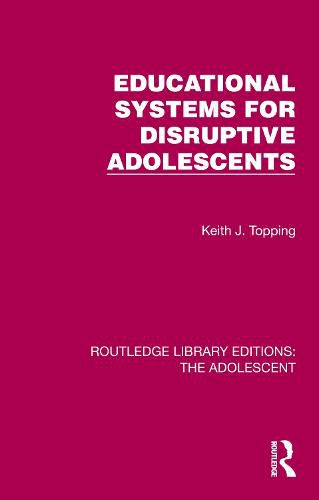Readings Newsletter
Become a Readings Member to make your shopping experience even easier.
Sign in or sign up for free!
You’re not far away from qualifying for FREE standard shipping within Australia
You’ve qualified for FREE standard shipping within Australia
The cart is loading…






In the early 1980s, concern about disruptive behaviour in secondary schools had grown, being variously regarded as a symptom of a decaying society or as a failure on the teachers’ part. One response was to ‘throw money’ at the problem and various different kinds of special schools and units had been devised to deal with disruptive adolescent pupils. Yet there was little systematic evaluation of the different options - particularly in terms of cost effectiveness.
Originally published in 1983, this book reviews all the available research on 21 alternative systems for the education of disruptive adolescents at the time. These range from the highly expensive residential special schools to on-site adaptations which involve no extra cost. Most are based on developments in Britain and the United States and the author concludes in favour of many of the less sophisticated systems. This book will be interesting historical reading for workers and students in educational psychology, special education and educational policy.
$9.00 standard shipping within Australia
FREE standard shipping within Australia for orders over $100.00
Express & International shipping calculated at checkout
In the early 1980s, concern about disruptive behaviour in secondary schools had grown, being variously regarded as a symptom of a decaying society or as a failure on the teachers’ part. One response was to ‘throw money’ at the problem and various different kinds of special schools and units had been devised to deal with disruptive adolescent pupils. Yet there was little systematic evaluation of the different options - particularly in terms of cost effectiveness.
Originally published in 1983, this book reviews all the available research on 21 alternative systems for the education of disruptive adolescents at the time. These range from the highly expensive residential special schools to on-site adaptations which involve no extra cost. Most are based on developments in Britain and the United States and the author concludes in favour of many of the less sophisticated systems. This book will be interesting historical reading for workers and students in educational psychology, special education and educational policy.